Chapter 5: Uniform Circular Motion and Gravitation - Review Terms
1/35
There's no tags or description
Looks like no tags are added yet.
Name | Mastery | Learn | Test | Matching | Spaced |
|---|
No study sessions yet.
36 Terms
Rotation Angle (Δθ)
The amount of rotation, defined as the ratio of the arc length to the radius of curvature: Δθ = Δs/r.
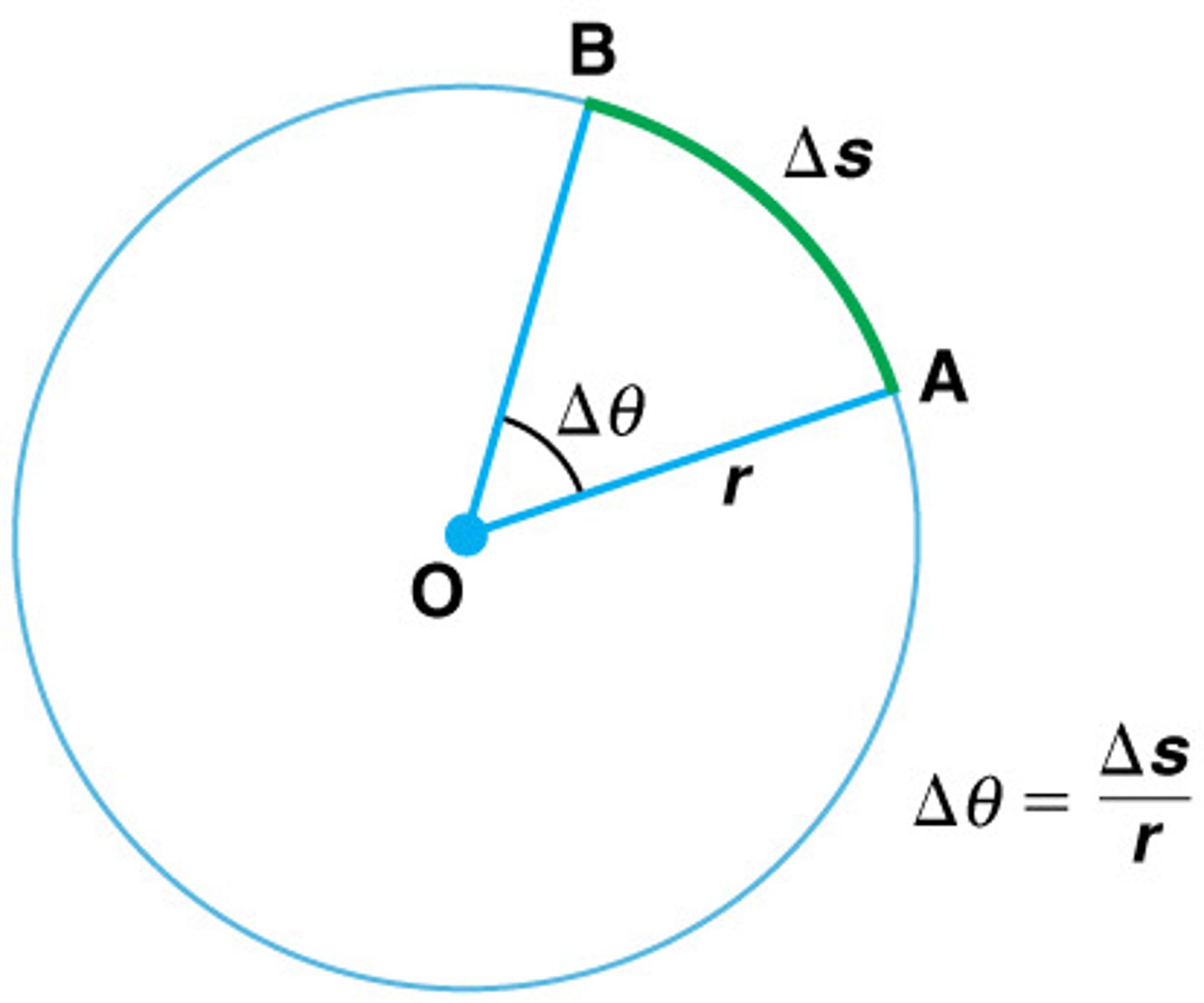
Angular Velocity (ω)
The rate of change of an angle, defined as ω = Δθ/Δt, with units of radians per second (rad/s).
Linear Velocity (v)
The rate of change of position along a path, related to angular velocity by v = rω.
Angular Velocity Calculation
For a car tire, ω = v/r, where v is the linear speed and r is the radius of the tire.
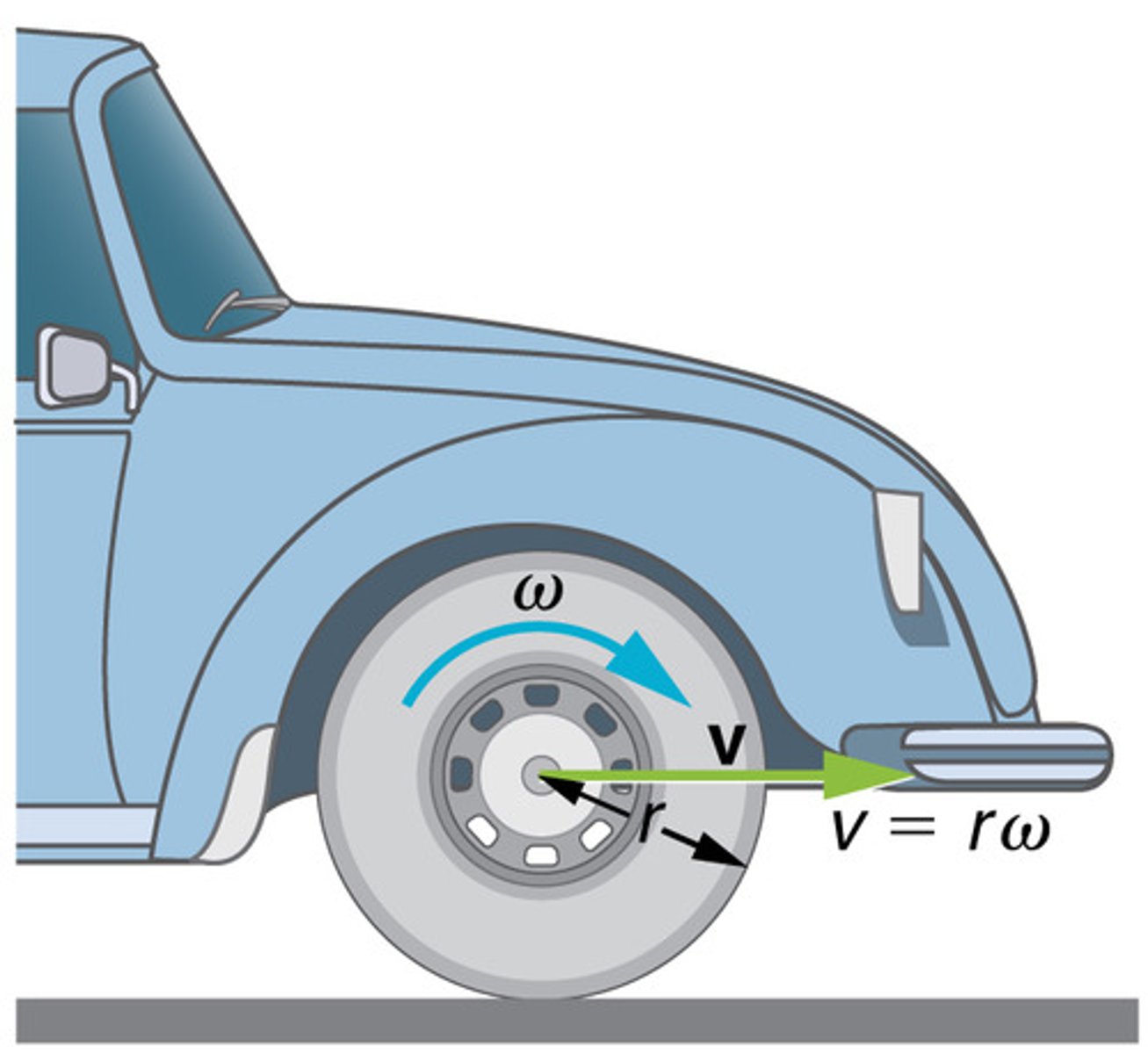
Centripetal Acceleration
The acceleration of an object moving in a circle at constant speed, directed toward the center of the circle.
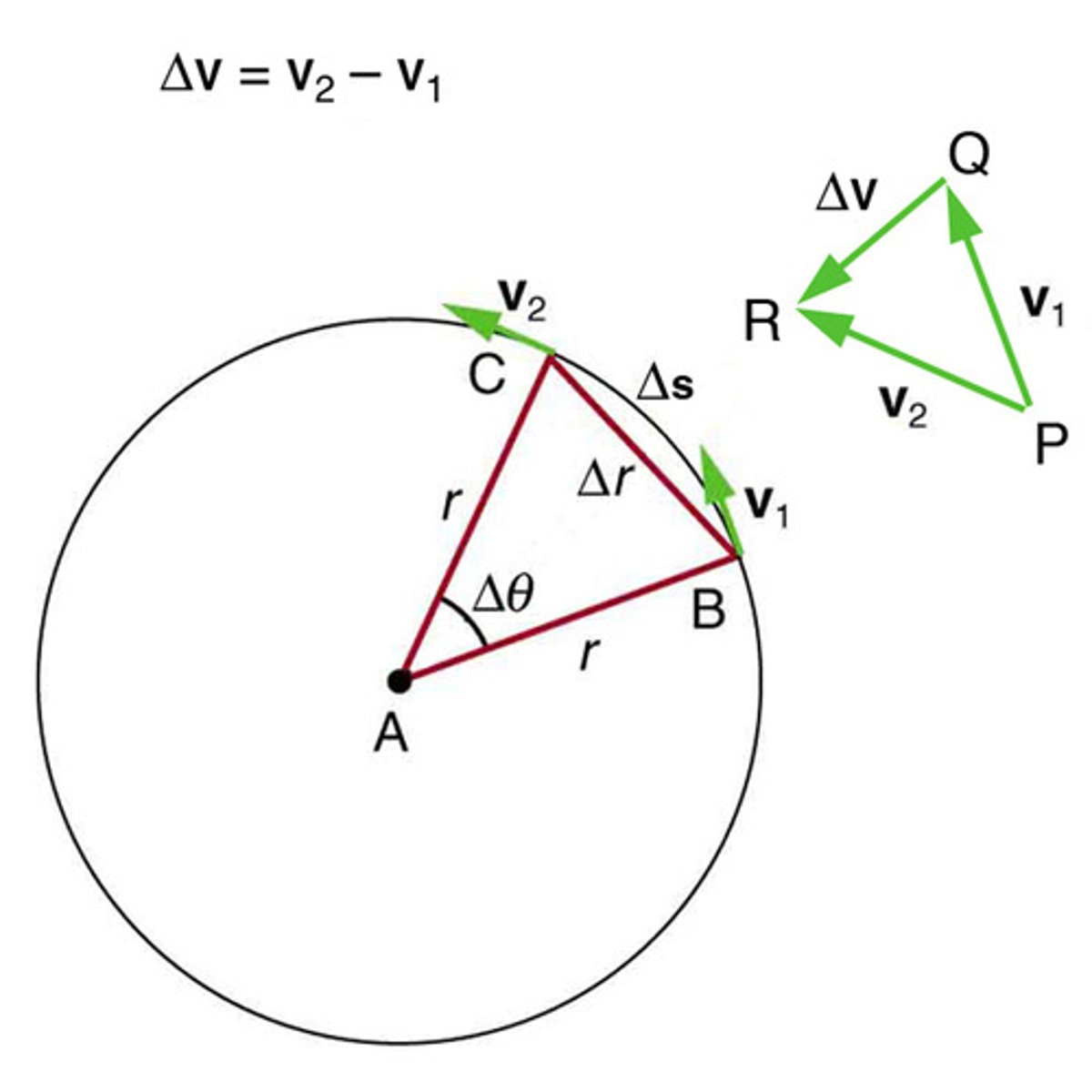
Uniform Circular Motion
Motion in a circular path at constant speed, where the direction of velocity changes continuously.
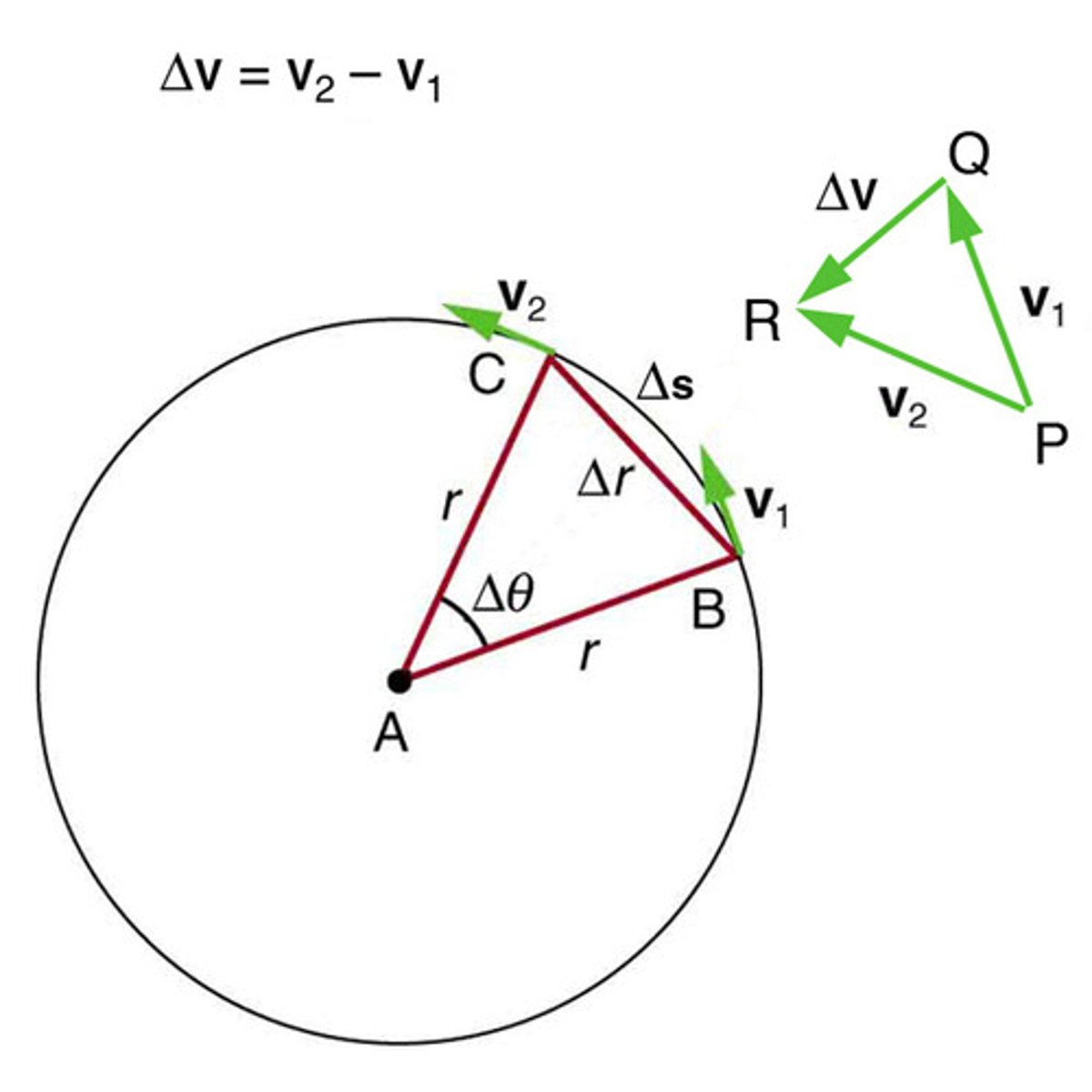
Centripetal
Means 'toward the center' or 'center seeking', describing the direction of centripetal acceleration.
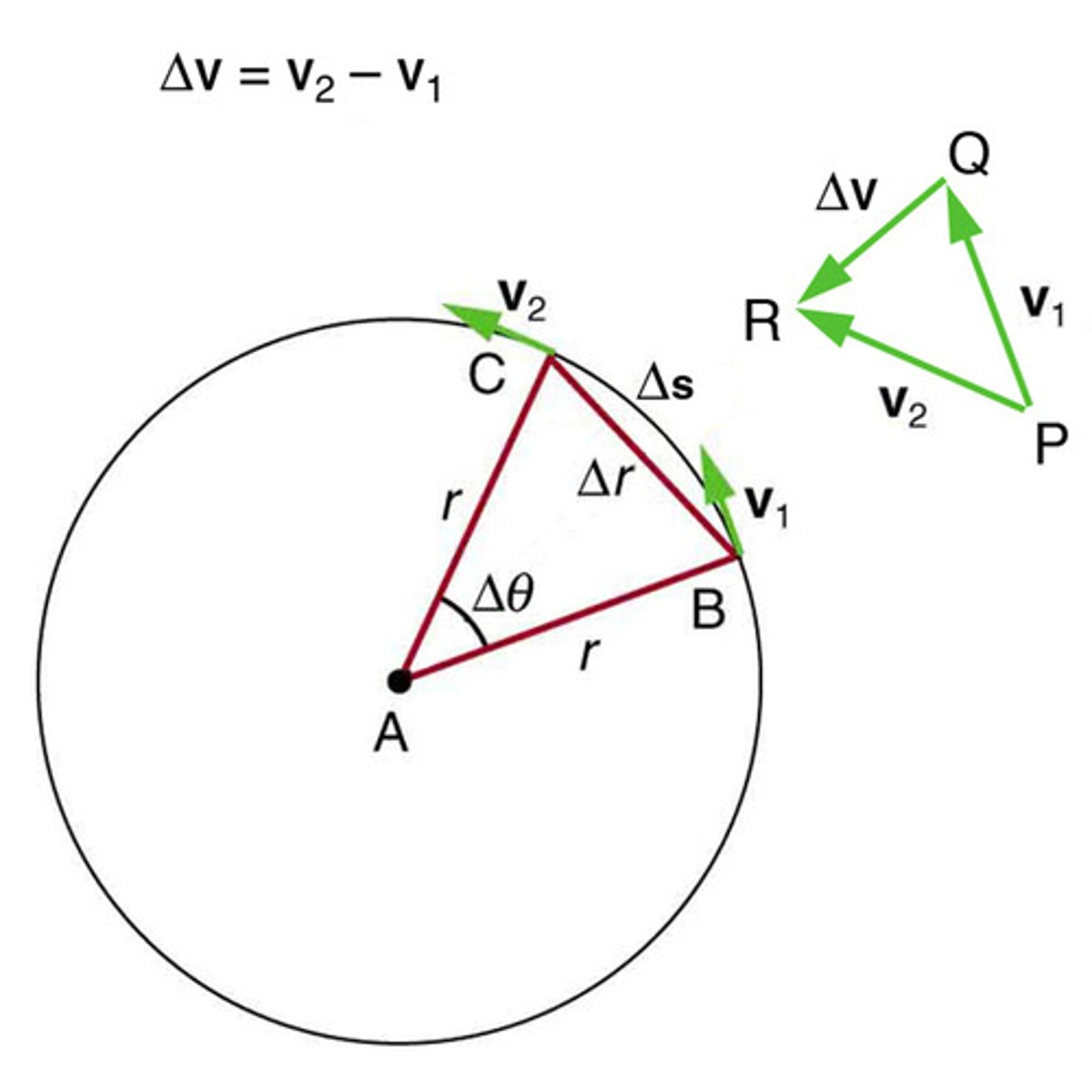
Expression for Centripetal Acceleration
ac = v^2/r, where ac is centripetal acceleration, v is linear speed, and r is the radius of the circular path.
Expression for Centripetal Acceleration in Terms of Angular Velocity
ac = rω^2, where ac is centripetal acceleration, r is the radius, and ω is angular velocity.
Net External Force
The force required to cause any acceleration, including centripetal acceleration, as per Newton's second law of motion.
Centripetal Force
Any net force causing uniform circular motion, directed toward the center of curvature, and equal to mass times centripetal acceleration.
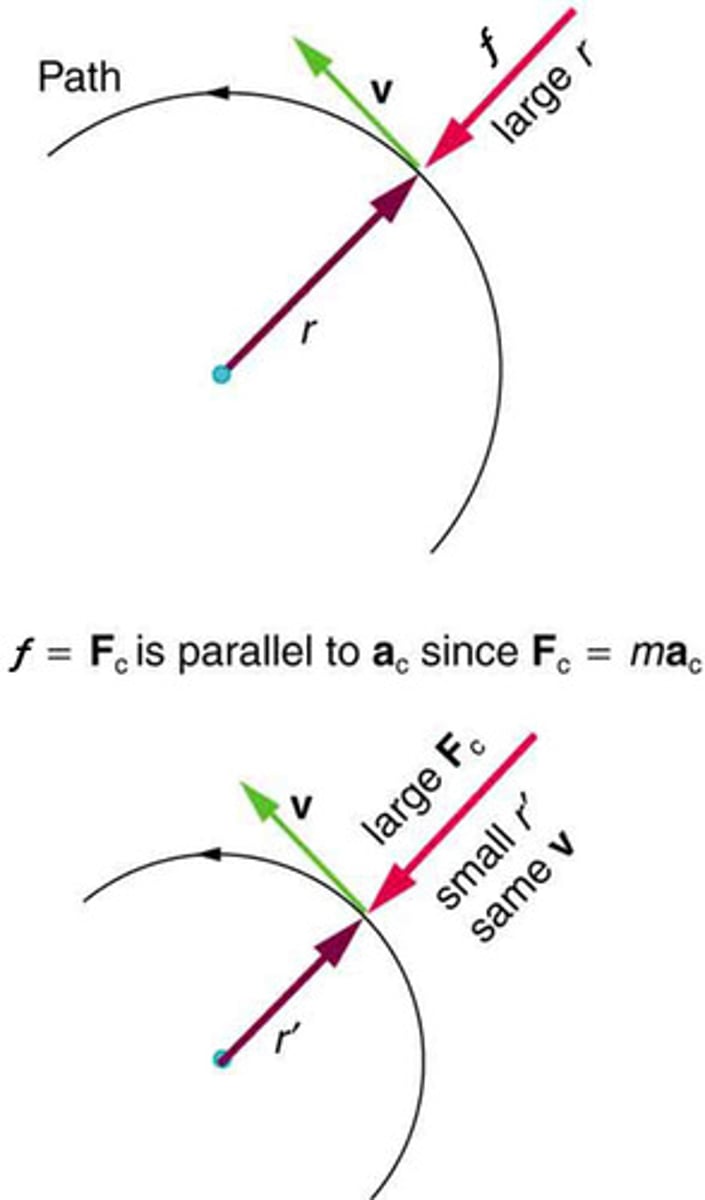
Centripetal Acceleration
The acceleration directed toward the center of a circular path, calculated as a_c = v^2/r or a_c = rω^2.
Net External Force
The vector sum of all external forces acting on an object, which equals the centripetal force in uniform circular motion.
Inertial Frame of Reference
A frame of reference in which all forces are real and have an identifiable physical origin, allowing Newton's laws of motion to take their standard form.
Non-inertial Frame of Reference
A frame of reference that is accelerating or rotating, where fictitious forces appear to act on objects.

Fictitious Force
An apparent force that arises in a non-inertial frame of reference, having no physical origin.
Coriolis Force
A fictitious force that acts on objects in motion within a rotating frame of reference, causing them to follow curved paths.
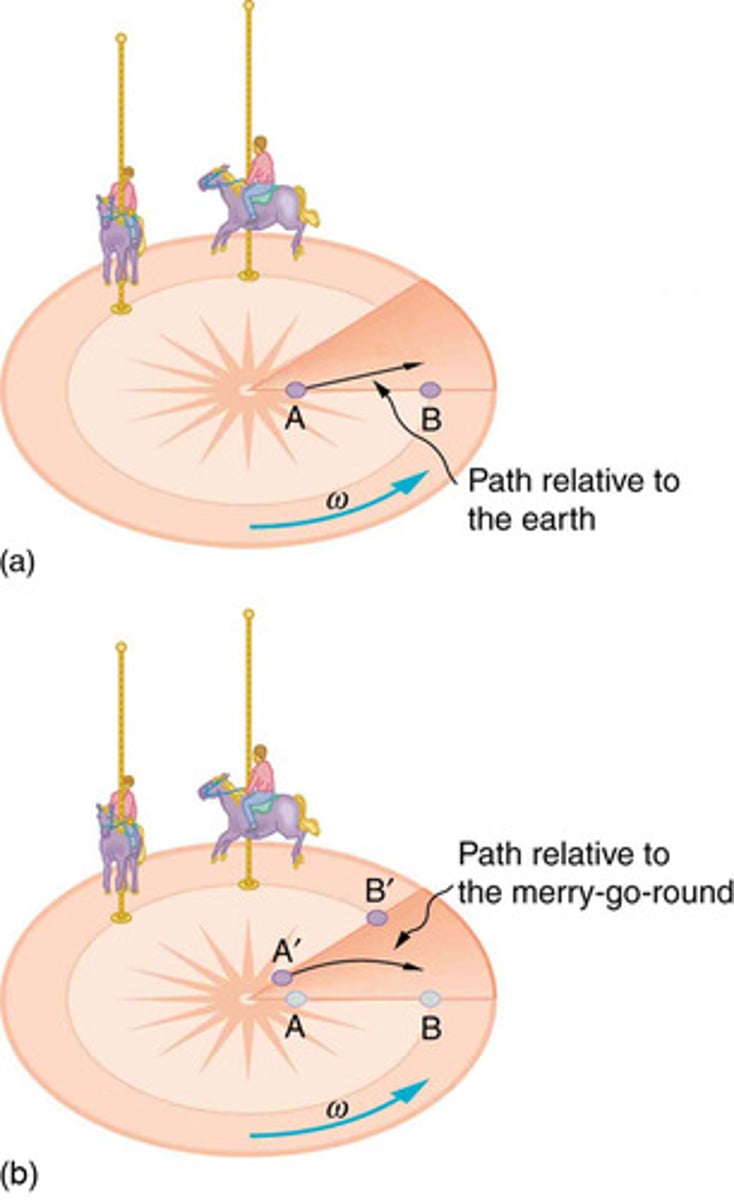
Centrifugal Force
A fictitious force perceived in a rotating frame of reference, acting outwardly away from the center of rotation.

Centripetal Force
A real force that acts on an object moving in a circular path, directed toward the center of rotation.
Newton's First Law
An object in motion stays in motion with the same speed and in the same direction unless acted upon by an unbalanced force.
Angular Velocity
The rate of rotation of an object, which affects the magnitude of fictitious forces in a rotating frame of reference.
Gravitational Force
A force that attracts any two objects with mass. It is directly proportional to the product of their masses and inversely proportional to the square of the distance between their centers.
Newton's Universal Law of Gravitation
States that every particle in the universe attracts every other particle with a force along a line joining them, proportional to the product of their masses and inversely proportional to the square of the distance between them.

Gravitational Constant (G)
A proportionality factor in the equation for Newton's universal law of gravitation, measured as 6.674 × 10^-11 N⋅m²/kg².
Centripetal Force
The force required to make a body follow a curved path, directed inward toward the center of rotation.
Centripetal Acceleration
The acceleration of an object moving in a circle at a constant speed, directed toward the center of the circle.
Newton's Third Law
For every action, there is an equal and opposite reaction, applicable in gravitational interactions.
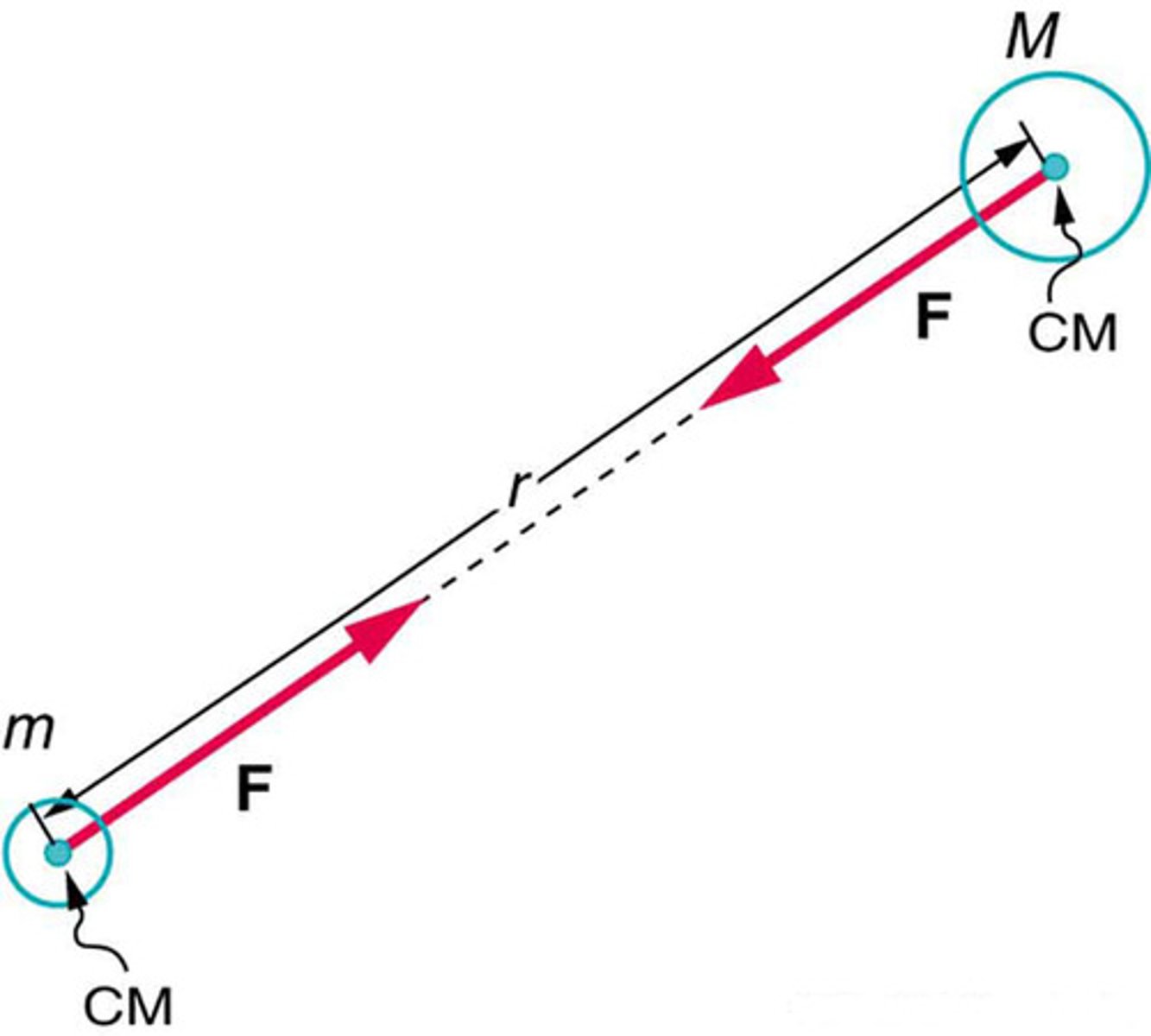
Kepler's First Law
The orbit of each planet about the Sun is an ellipse with the Sun at one focus.
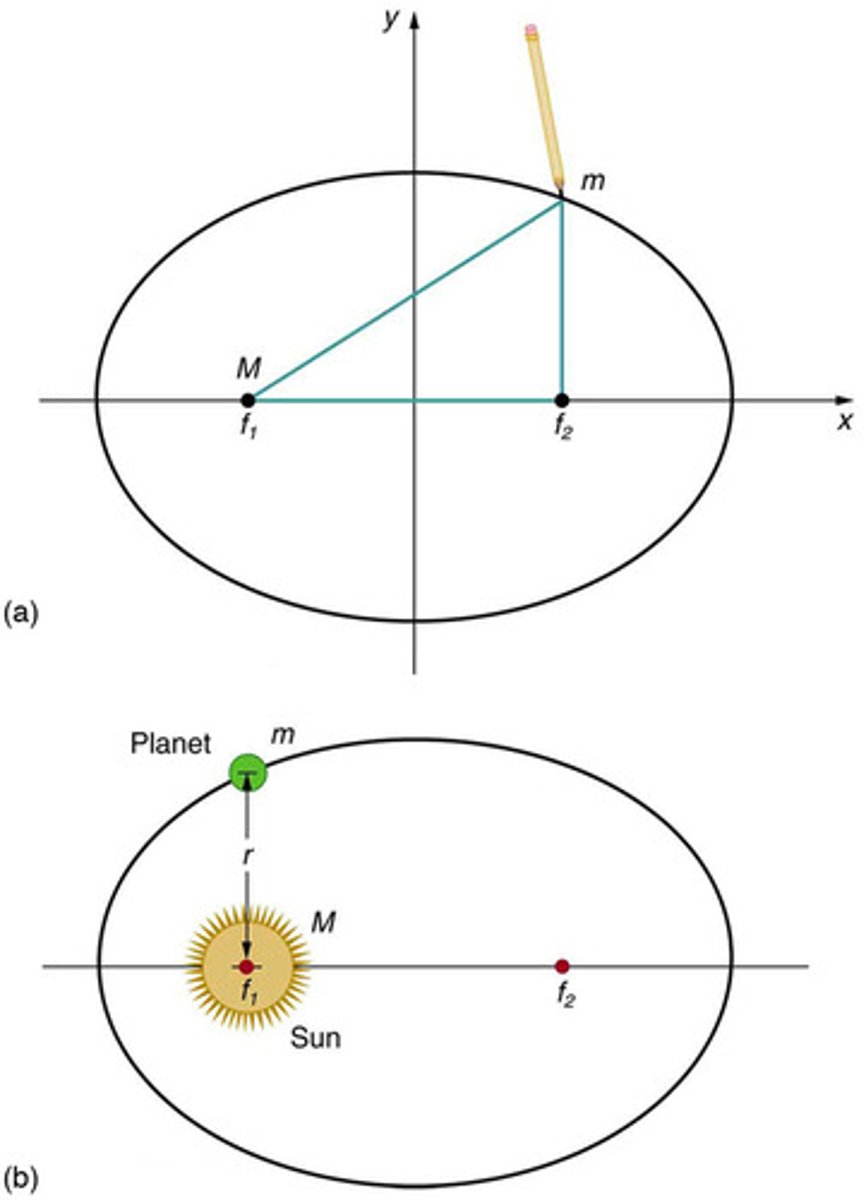
Kepler's Second Law
Each planet moves so that an imaginary line drawn from the Sun to the planet sweeps out equal areas in equal times.

Kepler's Third Law
The ratio of the squares of the periods of any two planets about the Sun is equal to the ratio of the cubes of their average distances from the Sun.
Gravitational Orbit
The path of an object as it moves around a larger mass due to gravitational force.
Centripetal Force
The force required to keep an object moving in a circular path, directed towards the center of the circle.
Newton's Universal Law of Gravitation
A law stating that every point mass attracts every other point mass by a force acting along the line intersecting both points. The force is proportional to the product of the two masses and inversely proportional to the square of the distance between them.
Artificial Satellite
A human-made object placed in orbit around a celestial body.
Inertial Frame of Reference
A frame of reference in which a body is not subject to any net external force and moves at a constant velocity.
Gravitational Force
The attractive force between two masses, proportional to the product of their masses and inversely proportional to the square of the distance between their centers.